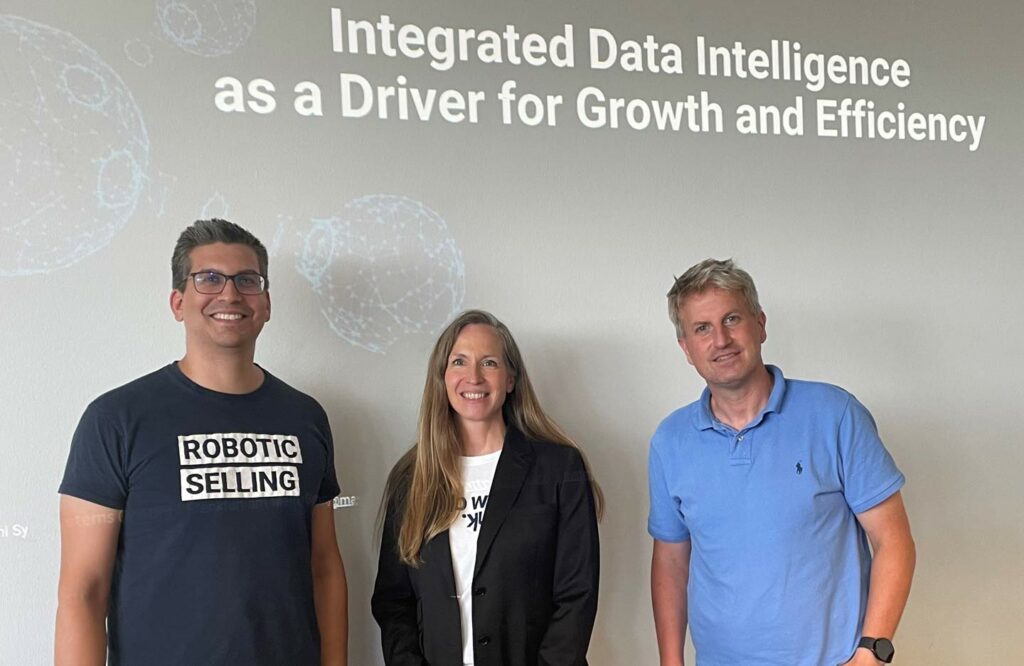Digitization is changing the requirements profile for CRM systems, including in industry. For a CRM system to clear the way to a digitized future for manufacturing companies, it must meet three essential requirements. All three requirements can be met with an enterprise data platform.
Requirement 1: Interconnection and integration
In B2B business, industrial companies also depend on making sense of their data. Today, it is becoming increasingly important for a company to use its various IT systems and databases to serve its day-to-day operations across departments. The decision in favor of a CRM system therefore also stands or falls with system and data integration. The CRM solution must be connected bidirectionally with the IT landscape – from the ERP system to the e-mail marketing tool – if it should deliver the intended benefits. If the CRM system is meant to really support sales in its work, all relevant information must be accessible to its users, such as the customer’s order history, products, and customer-specific sales. Sales can then act in the spirit of strategic customer retention and, for example, identify cross-selling and upselling potential. Only if the sales department knows the customer value, it is able to prepare customer meetings in a meaningful way and ultimately pursue strategic goals with customers. Another positive aspect of integration capability is the option to connect additional systems, for example to support mobile devices or for real-time translations through connected external services. This keeps the IT system infrastructure up to date, and companies gain the flexibility and adaptability needed to be prepared for future developments. Another advantage of modern technology is that it performs well and processes data in real time. For example, if a lead downloads a white paper on a new product from the website, its data can be synchronized from the marketing automation application into the CRM system in real time – because its purchase probability has increased. This allows the salesperson to place the right content at the right time and realize a competitive advantage.
Requirement 2: Think central sales processes
Connecting the CRM system with the company’s own system infrastructure and individualizing it as needed – these are just the first steps in the transformation to a modern, data-driven company. A central aspect of digitization is to automate customer-related processes with data support, across the boundaries of marketing and sales. There are many processes that are suitable for such automation: Leads collected by marketing at a trade show in the form of business cards need to be handed over to sales; leads generated by visits to the company website, a newsletter sign-up or a whitepaper download need to be qualified, developed to sales maturity through more detailed information offers and finally handed over to sales; salespeople want lists of qualified sales opportunities that show where the lead is coming from, what their interests are and what is known about the project so they can plan their consulting strategy accordingly; last but not least: The dealer network also needs a bundle of information on every new product launch and every product innovation from the manufacturer. A modern CRM system must make it possible to largely automate such processes in the sense of robotic selling. And why not synchronize prospects who have participated in a webinar about a manufacturer’s new product directly into the marketing automation system and simultaneously create them as leads in the CRM? This is how an efficient and successful lead-nurturing campaign can begin. It is essential to overcome outdated thinking in rigid departmental boundaries in favor of continuous and automated processes. This optimally supports sales employees in their work – and makes them more successful.
Requirement 3: From CRM to intelligent robotic selling
If traditional CRM becomes modern, sales-supporting robotic selling, three elements are essential: a company must integrate data from all available sources, it must create automated processes across the boundaries of marketing and sales, and it must be able to evaluate data through scientific data analytics. The result of good data analytics and scientific decision models can be, for example, that the regional sales representative can immediately see in his system for each lead or customer how high the purchase probability is for each of the ten products from the company’s portfolio – so that he can steer his sales calls accordingly. Or the intelligent robotic selling system shows the sales employee only those opportunities where the score is above a certain threshold. This also allows sales to focus on the company’s strategically important products and services. The automated analysis of data in sales-supporting robotic selling also makes it possible to reactivate existing customers in a targeted manner or to perform existing customer nurturing. The analyses also provide information for lead generation and for complete lead-nurturing campaigns in marketing automation. Numerous practical examples confirm the positive effects of robotic selling for marketing and sales. These companies have left old silo structures behind and access all relevant data about their customers. They automatically evaluate this data using scientific data analytics and thus support and control optimally designed processes in lead marketing and sales. One thing is certain: The time of standalone systems is over.



